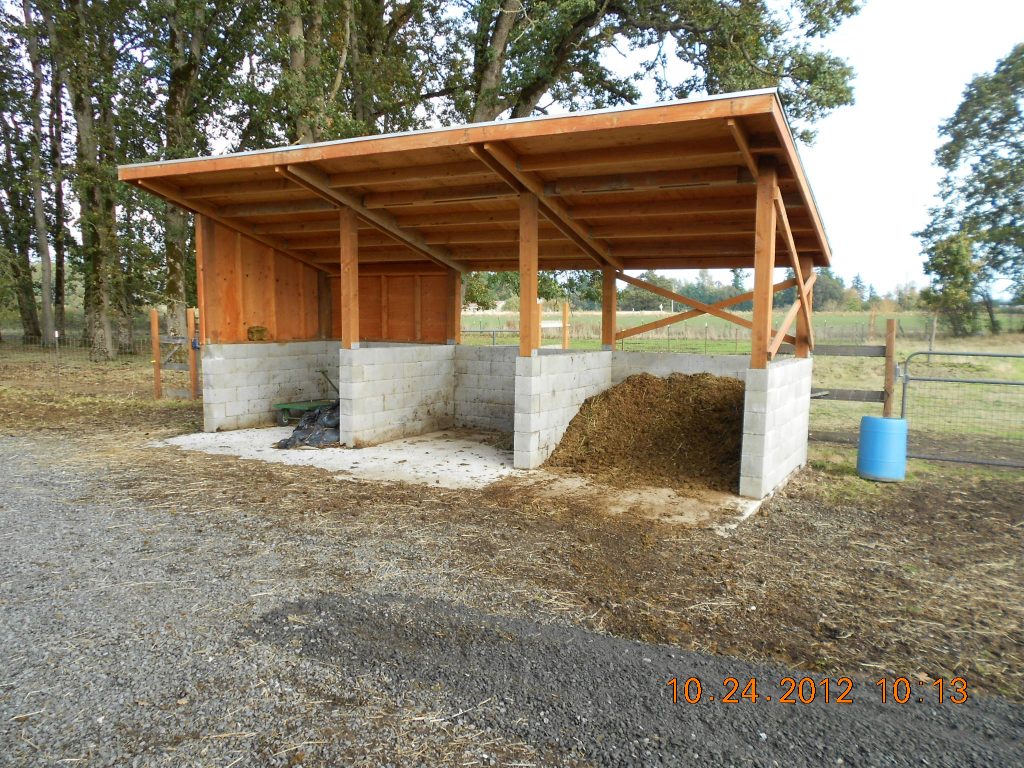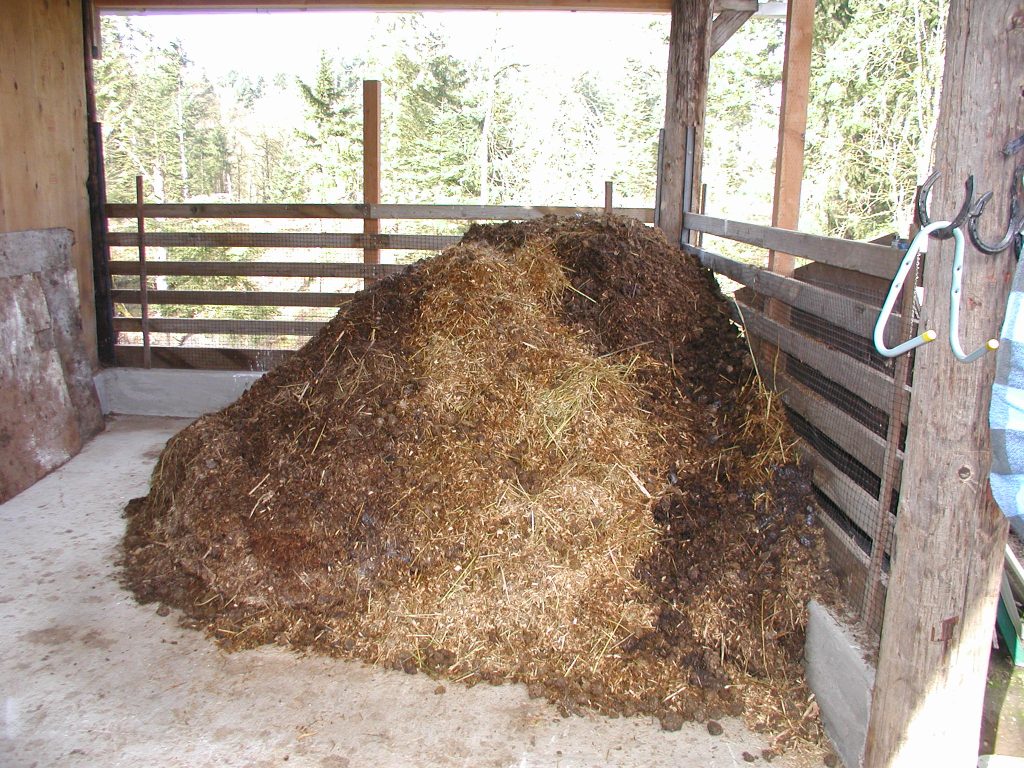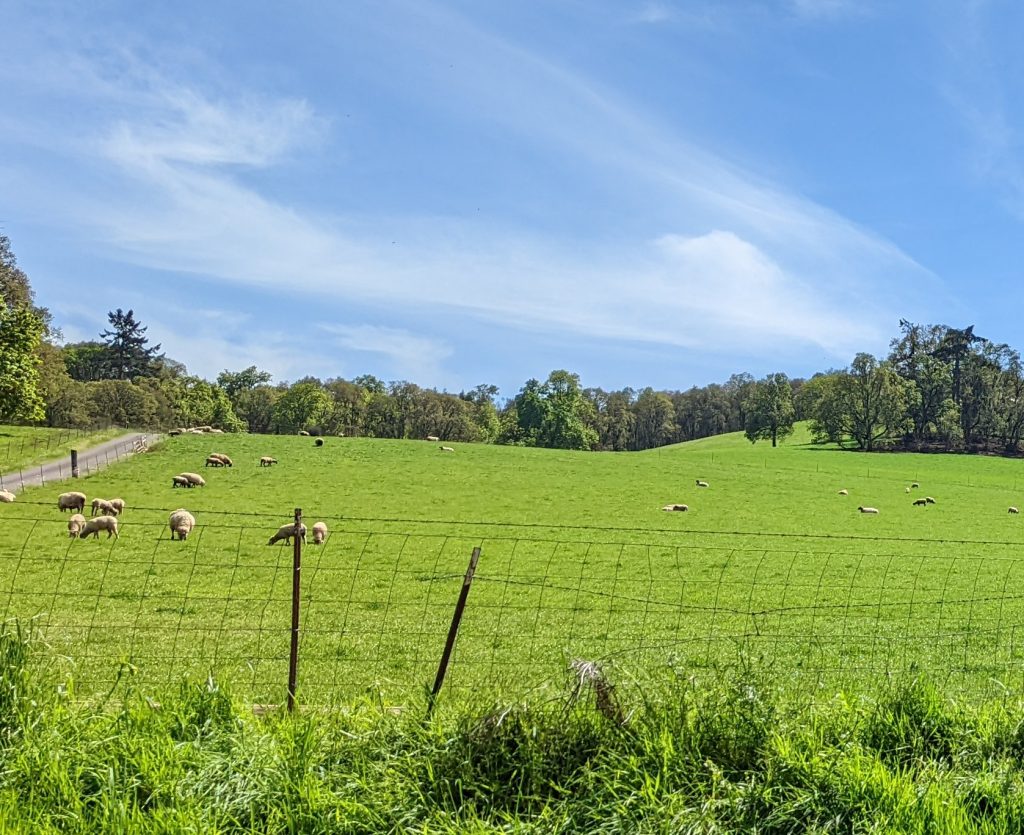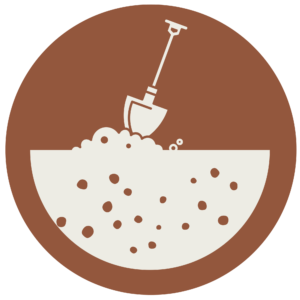Animal owners may love the products of our toil whether it be home grown meat on our dinner plate, lotion made from our goat’s milk, or going on a relaxing trail ride. However, along with those benefits comes a lot of waste in the form of manure. Manure can reduce a property’s value while putting the health of the property owner, farm, and animals at risk. What are some of the best practices for managing the manure that your animals produce? Let’s take a look at our best management practices for manure handling, storage, and use.
Manure Management
Manure, if not properly managed, can leach into ground and surface water causing pollution. Animals produce a lot of manure and without regular management it can become overwhelming quickly. Ideally manure should be collected every one to three days to reduce polluted run-off, fly breeding sites, and muddy areas. Using certain types of footing material can make cleaning sacrifice areas easier with minimal material loss. Federal and State laws forbid discharging any animal waste into water.
Manure Storage

Whatever the method of manure storage being used, the pile should be covered during wet periods and set on an impervious surface to limit leaching and runoff. If you plan on using a front loader to turn or move the pile make sure the roof of the structure is tall enough. The Marion SWCD can assist property owners in developing a manure composting/storage facility.
Manure Application
Applying manure to fields and pastures may help with the soil’s tilth, water holding capabilities, resistance to erosion and production of beneficial organisms. Crop nutrient needs should be the regulator for how much manure is applied. The goal is to maximize nutrient use with minimal environmental hazard. Nutrients in manure vary between animals, so conduct soil tests and then choose the proper animal manure accordingly.

Pasture Management
Maintaining a pasture to its maximum potential requires management that does not allow animals to overgraze, trample, or compact the soil. Putting too many animals on the land will put increased stress on the pasture and can quickly turn the pasture into a muddy, weedy field. Improving or protecting the health of your pasture can help increase the property’s value, while reducing the amount of polluted runoff that leaves the land. A healthy pasture will also support animal health by providing nutritious forage that will better their chances of staying disease-free
Signs of Poor Pasture Management
- Bare ground filled with weeds.
- High browse lines on trees and shrubs.
- Trampled stream bank.
- Animals grazing through the fence.
- Grazing happening on wet soil.
- Animals sunk in the mud/manure ankle deep.


Signs of Healthy Pasture Management
- Sacrifice area used when pasture is wet.
- Large pasture subdivided into smaller pastures.
- Animals fenced out of streams.
- Water provided in each pasture.
- Presence of a vegetation buffer between streams and pastures.
- Forage is never less than 3” in height.
Mud Management
Mud can be caused by a number of activities and conditions, including increased surface water, high traffic areas, highly organic soil, and the lack of ground cover. If not managed properly, mud can be hazardous to animal health, causing sickness and parasites. In addition, runoff from a muddy property will have high levels of sediment that contribute to water pollution.
6 Techniques for Reducing Mud
Reducing the amount of rain and water that runs through a pasture and animal yard will greatly reduce mud production. Ideally you want to divert water to a wetland, stream, ditch, bioswale or other safe outlet before it passes through animal areas. Here is a list of additional techniques for reducing mud production on a property.
- Establish a Sacrifice Area for Animals A sacrifice area is an alternative animal housing area used to keep animals off the pasture during the wet months. This area can also be used to care for sick or injured animals. Locate the sacrifice area away from water sources and plant a vegetation buffer around the area to reduce the chance of contaminating the water. The appropriate size depends on the type and quantity of animals that will be held. For longevity, the Marion SWCD recommends using crushed gravel for a base material.
- Pick up Manure Regularly Manure, if not properly managed, can leach into ground and surface water causing pollution. Animals produce a lot of manure and without regular management it can become overwhelming quickly. Ideally manure should be collected every one to three days to reduce polluted run-off, fly breeding sites, and muddy areas.
- Use Appropriate Footing Using certain types of footing material can make cleaning sacrifice areas easier with minimal material loss. Livestock-friendly hog fuel, wood chips, 5/8-minus gravel, or sand are good choices for footing.
- Install Gutters and Downspouts Things to consider include the providing adequate slope for the discharge, allowing for runoff to empty outside of the sacrifice area, use a protective covering to avoid damage from livestock.
- Use Vegetation as a Mud Manager Leave a grassed or vegetated buffer downslope from the sacrifice area to filter runoff.
- Rotate Water Trough Rotate water trough placement areas to avoid mud and manure buildup.
Resources

Ag Conservation Education Program
Students with livestock are invited to participate in the Ag Conservation Education (ACE) program. By participating in ACE, students learn techniques for managing manure and mud and receive a tarp for covering manure. Upon successful completion of the program, students receive a certificate that can be listed on their resume, record books, and award applications. There is no cost to participate in ACE.

Rural Living Handbook
The Rural Living Handbook contains basic information and identifies resources for new and long-time residents of rural Marion County. Get connected!

Manure Management Handout
This handout includes steps for good manure management and a management calendar.
Contact Us
Our team can help with all your concerns.

